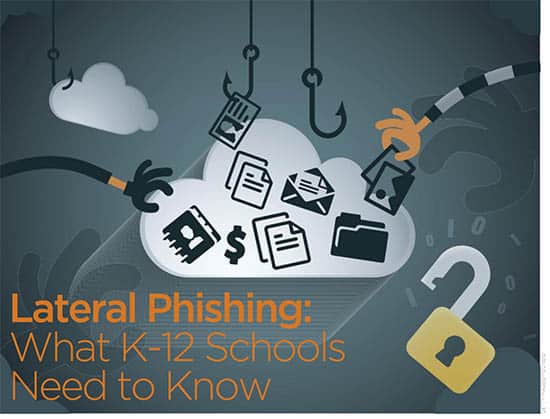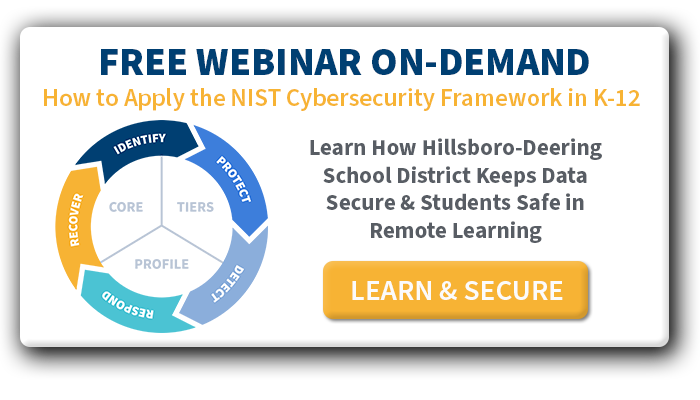by Sateesh Narahari, for Tech & Learning
Students and teachers in K-12 school districts use technology in the classroom for learning, teaching, administrative operations, and to have real-time conversations. With the rise of cloud apps such as Google G Suite and Microsoft Office 365, it’s no secret that students and staff are online during the school day–sending emails and sharing files–more than ever before. In the education sector, email apps like Gmail, Outlook, and Exchange are a must-have to share files and assignments in order to support today’s age of digital learning. As a result, billions of emails are sent every day.

What Is Lateral Phishing?
Lateral phishing is a phishing campaign executed by an external threat–such as a hacker–but the email is sent from a school district’s compromised account to other accounts within the organization. In the case of K-12 school districts, this means the email is sent from a student, staff, or faculty member’s hijacked account.
Since the email with malicious content is being sent from an internal school district account, the attack may not be caught by IT teams and can operate undetected for a long period of time. this could lead to more than one account becoming compromised in the same school, or another school within the district and the task of putting a stop to the phishing campaign becomes exponentially more difficult to contain.
In K-12, The Perimeter Is No More
K-12 education now lives in a post-perimeter world. Not only do IT teams need to monitor inbound and outbound traffic, but they also need to be monitoring what is inside the internal emails exchanged within a school district. Whether it be an email from a student to a teacher (or vice versa), a teacher to another teacher, or a teacher to a staff member (or vice versa).
Today, students, staff, and faculty bring their laptops and mobile devices home–outside of a school’s network–but still exchange data with one another inside a cloud application. This means a school district’s security perimeter isn’t as defined as it once was. Furthermore, one could argue a perimeter no longer exists because people are more mobile today than before.
But yet, the education market continues to look at cybersecurity from a traditional view, focusing on network firewalls, email gateways, and message transfer agents (MTA). When in reality, K-12 education needs to shift focus to monitoring what is taking place inside an application at all times. Here are three reasons why…
READ THE FULL ARTICLE IN TECH & LEARNING MAGAZINE HERE >>

